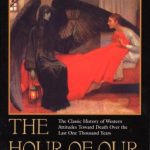by Philippa Levine
The best overview of the history of eugenics is the classic study by Daniel J. Kevles, In the Name of Eugenics: Genetics and the Uses of Human Heredity (1998).
Nancy Stepan, The Hour of Eugenics: Race, Gender, and Nation in Latin America (1991) offers a fascinating analysis of the eugenic practices found throughout Latin America. Latin American eugenics was often markedly different from the policies found not only in its neighbor to the north, but in much of northern Europe as well.
Martin S. Pernick, The Black Stork: Eugenics and the Death of ‘Defective’ Babies in American Medicine and Motion Pictures since 1915 (2000) looks at the Harry Haiselden case. After he was expelled from medical circles, Haiselden made a film about his crusade, the ‘Black Stork’ of Pernick’s title.
Alexandra Minna Stern, Eugenic Nation: Faults and Frontiers of Better Breeding in Modern America (2005) Its focus is mostly on the west, and especially on California which was one of the most active eugenic states in the nation.
Paul A. Lombardo’s Three Generations, No Imbeciles: Eugenics, the Supreme Court, and Buck v. Bell (Baltimore: The Johns Hopkins University Press, 2010)
Stefan Kühl,The Nazi Connection: Eugenics, American Racism, and German National Socialism (1994) lays out the ties between American and German eugenics in the inter-war years.
Robert N. Proctor’s Racial Hygiene: Medicine Under the Nazis (1988) details the work carried out in the camps and beyond.




